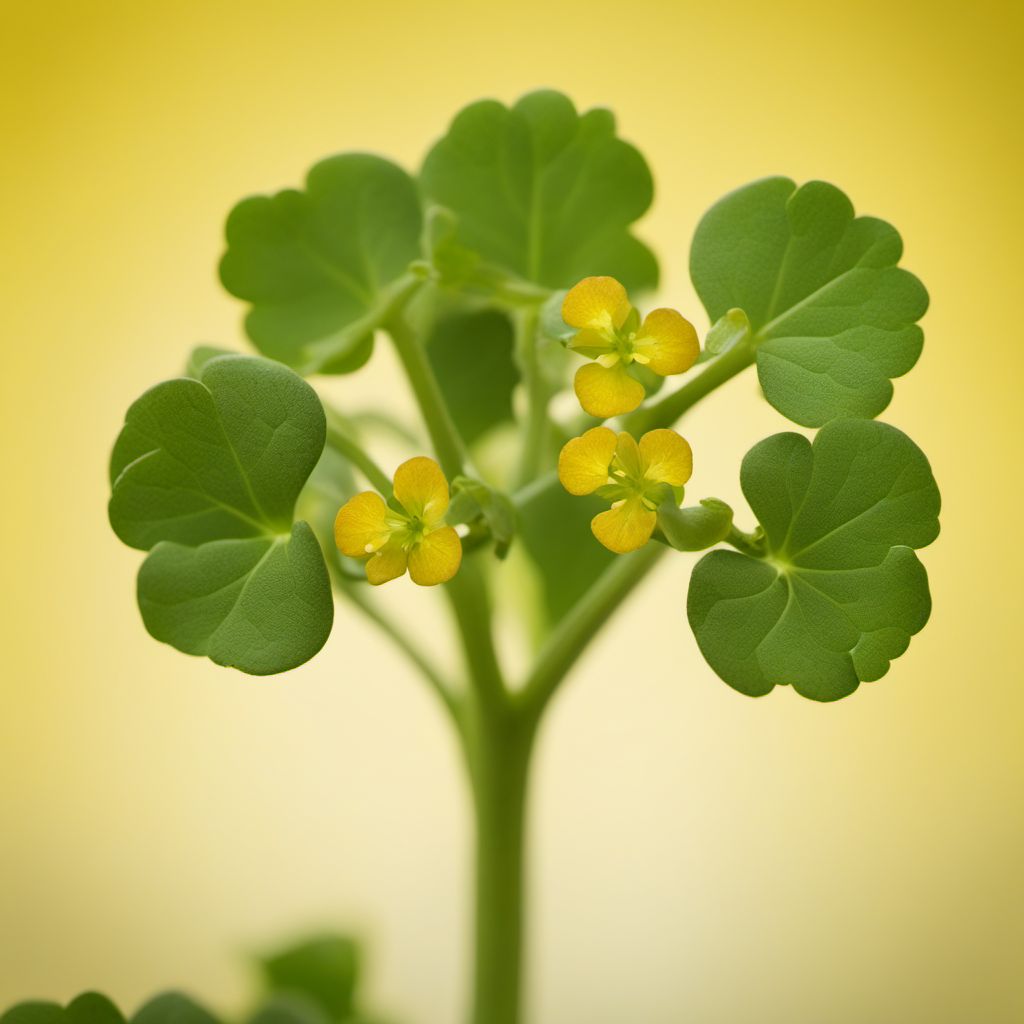
Ingredient
Winter cress
The Nutrient Powerhouse
Winter cress is a leafy green vegetable with small, tender leaves and a peppery taste. It belongs to the Brassicaceae family, which includes other cruciferous vegetables like kale and broccoli. The leaves are dark green with a slightly wrinkled texture. Winter cress is often consumed raw in salads or used as a garnish, but it can also be cooked and added to various dishes. Its flavor becomes milder when cooked, making it a versatile ingredient in both raw and cooked preparations.
Origins and history
Winter cress is native to Europe and Asia and has a long history of culinary use. It was traditionally foraged in the wild during the winter months when other fresh greens were scarce, hence its name. Winter cress was highly valued for its nutritional content and ability to provide essential vitamins and minerals during the colder months. Today, it is cultivated in many regions and readily available in grocery stores and farmers markets.
Nutritional information
Winter cress is a nutritional powerhouse, rich in vitamins A, C, and K, as well as folate, calcium, and iron. It is low in calories and high in dietary fiber, making it an excellent choice for those looking to boost their nutrient intake. Its cruciferous nature also provides potential health benefits, including antioxidant and anti-inflammatory properties.
Allergens
There are no known allergens associated with winter cress.
How to select
When selecting winter cress, look for vibrant, fresh leaves that are free from wilting or yellowing. Avoid any leaves that appear damaged or have signs of decay. Opt for organically grown winter cress whenever possible to minimize exposure to pesticides or other chemicals.
Storage recommendations
To maintain the freshness of winter cress, store it in the refrigerator. Wrap the leaves in a damp paper towel and place them in a plastic bag or airtight container. This will help retain moisture and prevent wilting. Use the leaves within a few days for the best flavor and texture.
How to produce
Winter cress can be easily grown in home gardens or containers. It thrives in cool weather and prefers well-drained soil with plenty of sunlight. Sow the seeds directly in the garden or start them indoors and transplant them once they have developed a few true leaves. Regular watering and occasional fertilization will help promote healthy growth.
Preparation tips
Before using winter cress, wash the leaves thoroughly under cold running water to remove any dirt or debris. Trim off any tough stems or damaged leaves. Winter cress can be enjoyed raw in salads, sandwiches, or wraps, or lightly cooked in stir-fries, soups, or sautés. Its peppery flavor pairs well with citrusy dressings, creamy sauces, or other bold ingredients. Add it towards the end of cooking to preserve its vibrant color and texture.
Culinary uses
Winter cress is commonly used in European and Asian cuisines, particularly in countries like France, Germany, and Japan. It is often featured in salads, sandwiches, and stir-fries, where its peppery flavor adds a refreshing bite. It can also be used as a garnish or added to soups and stews for an extra nutritional boost.
Availability
Winter cress is widely available in grocery stores, farmers markets, and specialty stores that offer a variety of fresh produce. It is more commonly found during the cooler months of the year.
